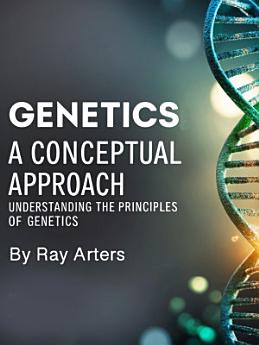Genetics: A Conceptual Approach – Understanding the Principles of Genetics
About this ebook
The story of genetics begins with humanity's ancient observations of heredity, noting that offspring tend to resemble their parents and that certain traits run in families. Agricultural societies have long understood the principles of selective breeding, choosing animals and plants with desirable characteristics to produce improved offspring. However, the scientific foundation of genetics emerged only in the mid-19th century with Gregor Mendel's groundbreaking experiments with pea plants in the monastery gardens of Brno.
Mendel's genius lay not just in his careful experimental design, but in his quantitative approach to studying inheritance patterns. By focusing on discrete, easily observable traits such as flower color and seed shape, and by meticulously counting the offspring in each generation, Mendel was able to discern mathematical patterns that revealed the underlying rules of inheritance. His discovery that traits are inherited as discrete units, now called genes, and that these units maintain their identity across generations, laid the foundation for all subsequent genetic research.








